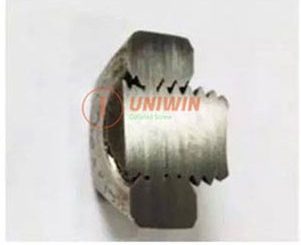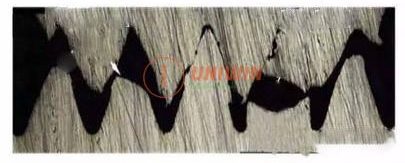How to remove rusted or locked stainless steel screws?
Locking occurs when assembling stainless steel bolts and stainless steel nuts. What is deadlock? Deadlock refers to the phenomenon that the bolts and nuts are occluded and locked during the fastening process, which generally occurs between stainless steel bolts and nuts. Here are three tips for removing rusted or locked stainless steel screws.
- Knock. Never use a wrench or screwdriver to remove rusted or seized stainless steel screws. If the hexagonal corners of the screw are slipped, or the screw is broken, and the wrench is damaged, the loss outweighs the gain. We can use a hammer to strike the rusted stainless steel nut continuously, and a few knocks can loosen the nut. Just like the fixing screws at both ends of the pedals of the bicycles we often ride, we can tap the nuts with the force and angle according to the thickness of the pedals. We can hit the metal screws with some power and lightly tap the plastic screws. If knocking is not enough, you can use a hammer to knock the nut in circles, and the nut can be easily disassembled.
- Vibration. Vibration can also loosen screws. Gently vibrate the wrench handle with a hammer, and the rusted screws can generally be loosened by vibration and then can be unscrewed with a tool.
- Burn. If none of the above two methods can solve the rust problem, we can use fire to thoroughly roast the screws and nuts with a gas welding oxidizing flame and drip a little oil on the red-hot screws. The purpose of heating the screw is to cause the screw to expand when heated. The purpose of dripping oil is to make the screw shrink when it is cold and increase the gap between the screw rod and the stainless steel nut, and the nut can be unscrewed after the oil flows into it. During welding, keep away from flammable materials to avoid fire.
In order to reduce unnecessary trouble, how to avoid the deadlock phenomenon?
- Keep the central axis of the screw and nut perpendicular to the locked surface, and reduce the inclination angle of the central axis of the screw and nut.
- Use a torque or socket wrench as much as possible to avoid excessive force and control the torque within the safe stock torque range.
- Use a manual wrench instead of the electric wrench as much as possible, which can slow down the locking speed, keep the thread clean, reduce heat energy, and thus reduce the adhesion between screws and nuts.
- Select screws and nuts of different materials for use together to avoid adhesion of the same material.
- Choose anti-locking products or use anti-locking lubricating oil to reduce friction and avoid locking.



